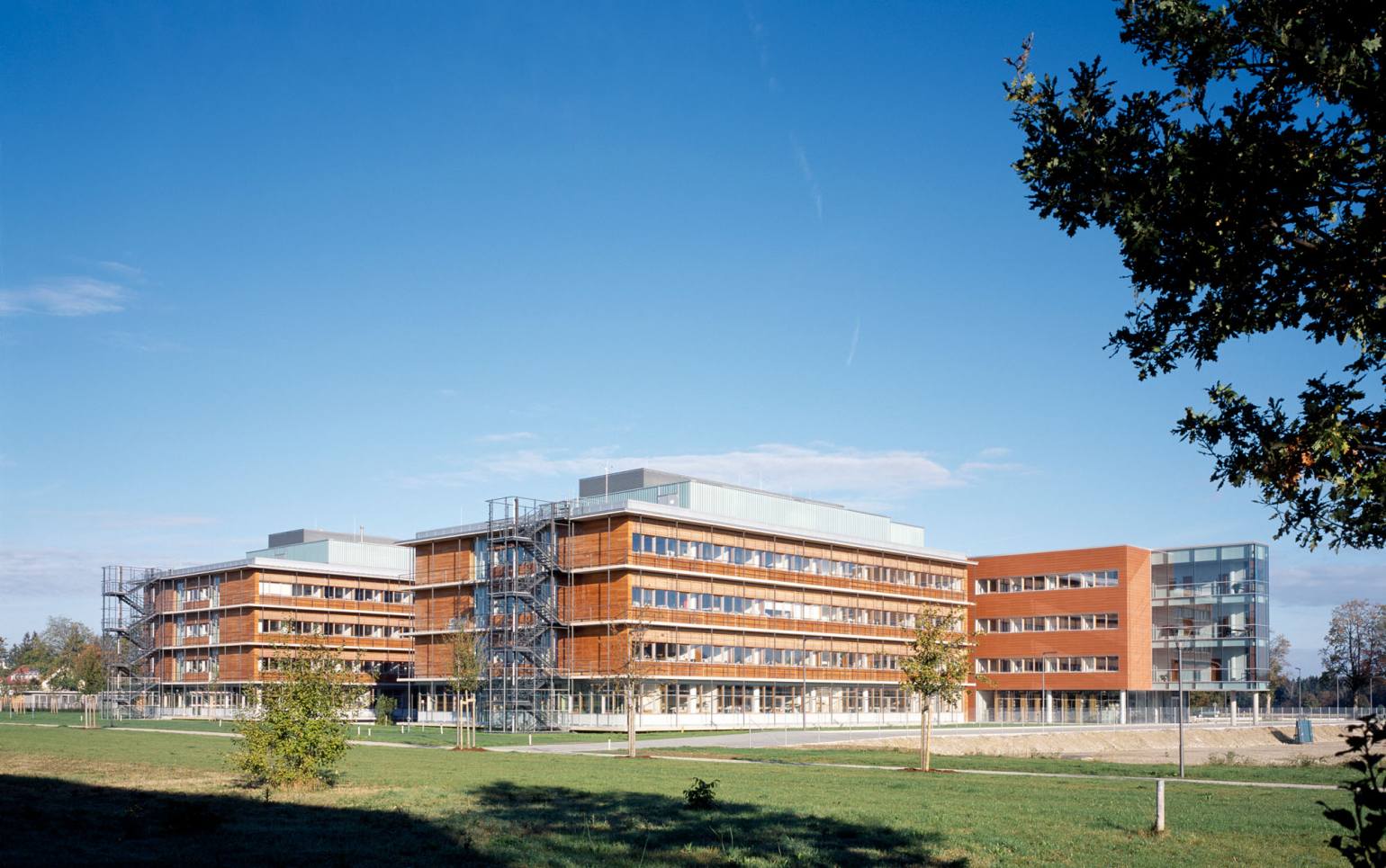Ludwig Maximilians University Munich – Campus Planning, Martinsried
Client
Staatliches Bauamt München 2
Competition 1996
1st prize Realisation Biocenter
2nd prize Campus planning
Landscape architects:
mahl-gebhard-konzepte, Munich
The master plan for development of the structural facilities of the Faculties of Biology, Physics, Geosciences and Medicine, plus canteen and lecture hall, was created on the basis of an urban development competition in 1996. This LMU (Ludwig Maximilians University) campus is situated at the border of the city district of Munich-Großhadern and the municipality of Planegg-Martinsried.
An openness to these areas located to the east and west of the grounds is achieved by means of a comb-shaped urban planning design. Integration of the landscape in the urban structure became a key feature of the master plan. The main access route of all the faculties runs from south to north as a central axis through the comb-shaped arrangement of buildings.
Under the motto "A Living Network", the campus path is envisaged to function as the lifeline and development axis of the university grounds, in addition to reflecting the interdisciplinarity of the faculties. The alternation of urban spaces and open landscape is a central idea of the design concept, which is clearly reflected by the façade design.
The landscape-facing façades are clad with wood, while the "inward" façades lining the paths and squares, are finished with brick.
A green space concept was developed in collaboration with the landscape architects Mahl-Gebhard. This proposes a clearly differentiated landscape design, ranging from forest-like vegetation to open meadow areas, and also includes a variety of individual institution-specific green spaces.
The intention is to retain the structure of the forests, and to restore and complete lost associations, in order to allow an identification of the transition between urban and rural spaces. The university campus is like an island in the countryside just outside the city limits, with linear relations to the surrounding scientific institutions and university facilities, as well as to the neighbouring municipalities.



